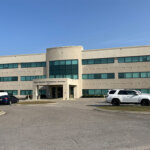Interstitial Lung Disease
Interstitial lung disease (ILD) is a term used to describe a group of conditions that cause scarring (pulmonary fibrosis) and/or inflammation in space between the air sacs of the distal lung, causing shortness of breath, chronic dry hacking cough, and decreased blood oxygen levels.
About Interstitial Lung Disease
Interstitial lung disease (ILD) is a term used to describe a group of conditions that cause scarring (pulmonary fibrosis) and/or inflammation in space between the air sacs of the distal lung.
In most patients, inflammation and scarring gradually interfere with gas-exchange and cause slowly progressive shortness of breath, chronic dry hacking cough, and decreased blood oxygen levels. The most common form of this disease is idiopathic pulmonary fibrosis.
Risk Factors for ILD
- Use of specific prescription medications
- Various environmental and occupational exposures
- Advanced age
- Genetics/family history
- Autoimmune conditions
- Smoking
- Prior radiation or chemotherapy
Types of ILD
Our physicians evaluate all forms of this lung condition including:
- Acute interstitial pneumonia (AIP or Hamman-Rich syndrome)
- Connective tissue-related lung fibrosis (scleroderma, systemic lupus erythematosis, Sjogren’s, rheumatoid arthritis)
- Drug-induced lung fibrosis
- Hypersensitivity pneumonitis
- Idiopathic forms of lung fibrosis
- Langerhan’s cell histiocytosis (aka Eosinophilic granuloma or Histiocytosis X)
- Occupational-related lung fibrosis (e.g. asbestosis)
- Pulmonary alveolar proteinosis (PAP)
- Radiation-induced lung fibrosis
- Sarcoidosis
Treating ILD at Singing River
Management of patients with interstitial lung diseases is often complex and varies depending on the underlying cause. Our goal is to provide patients with a multidisciplinary approach so we may expertly manage every aspect of their complex disease.
For patients referred to Singing River Health System, our pulmonologists work closely with a wide range of specialists including thoracic surgeons, rheumatologists, radiologists, pathologists, nurses and respiratory therapists.
At Singing River, we maintain an open line of communication between the patient and doctors at all times to ensure that all specialists on the team agree with not only the diagnosis but also the treatment plan.
Common Treatments
The primary goal in the treatment of ILD is to reduce the buildup of scar tissue. Sometimes this involves treating patients with drugs that actually restrict the cells that make scar tissue. Other times we use therapies that try to stop the primary process such as avoiding exposure to specific environmental insults or stopping the immune system from damaging the lungs.
Common therapies (medications and non-drug therapies) used to treat ILD
- Prednisone
- Mycophenolate, Cytoxan, Imuran and other immune suppressive agents
- Anti-fibrotics such as Pirfenidone and Nintedanib
- Oxygen Therapy
- Pulmonary Rehab
- Lung Transplant


